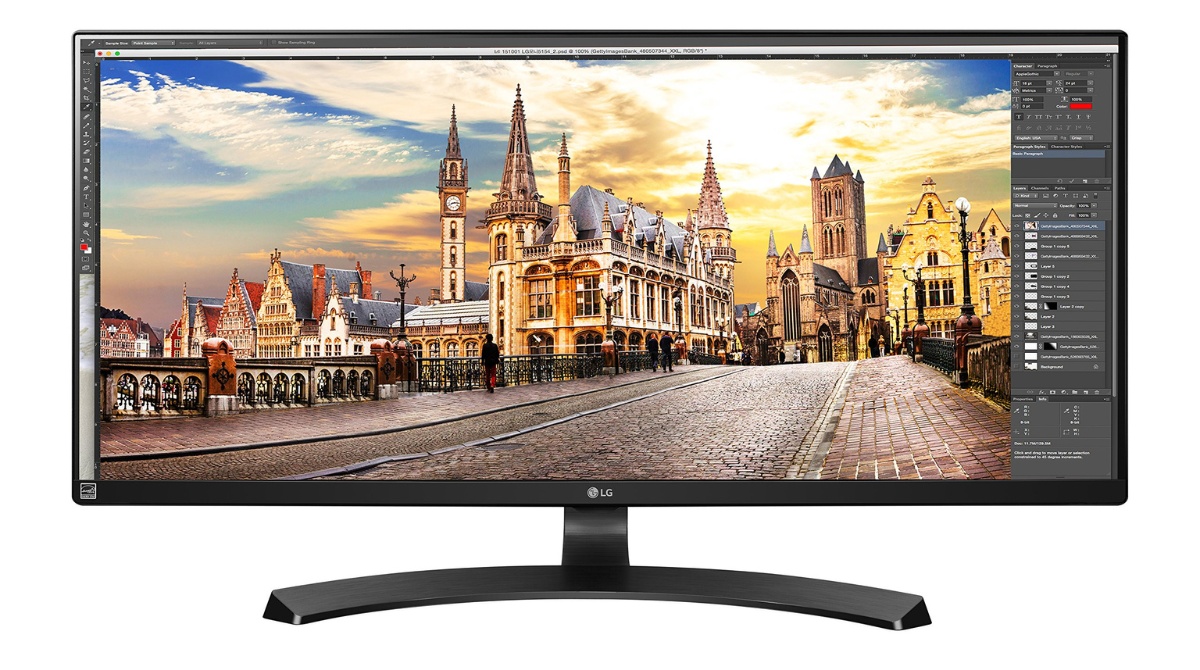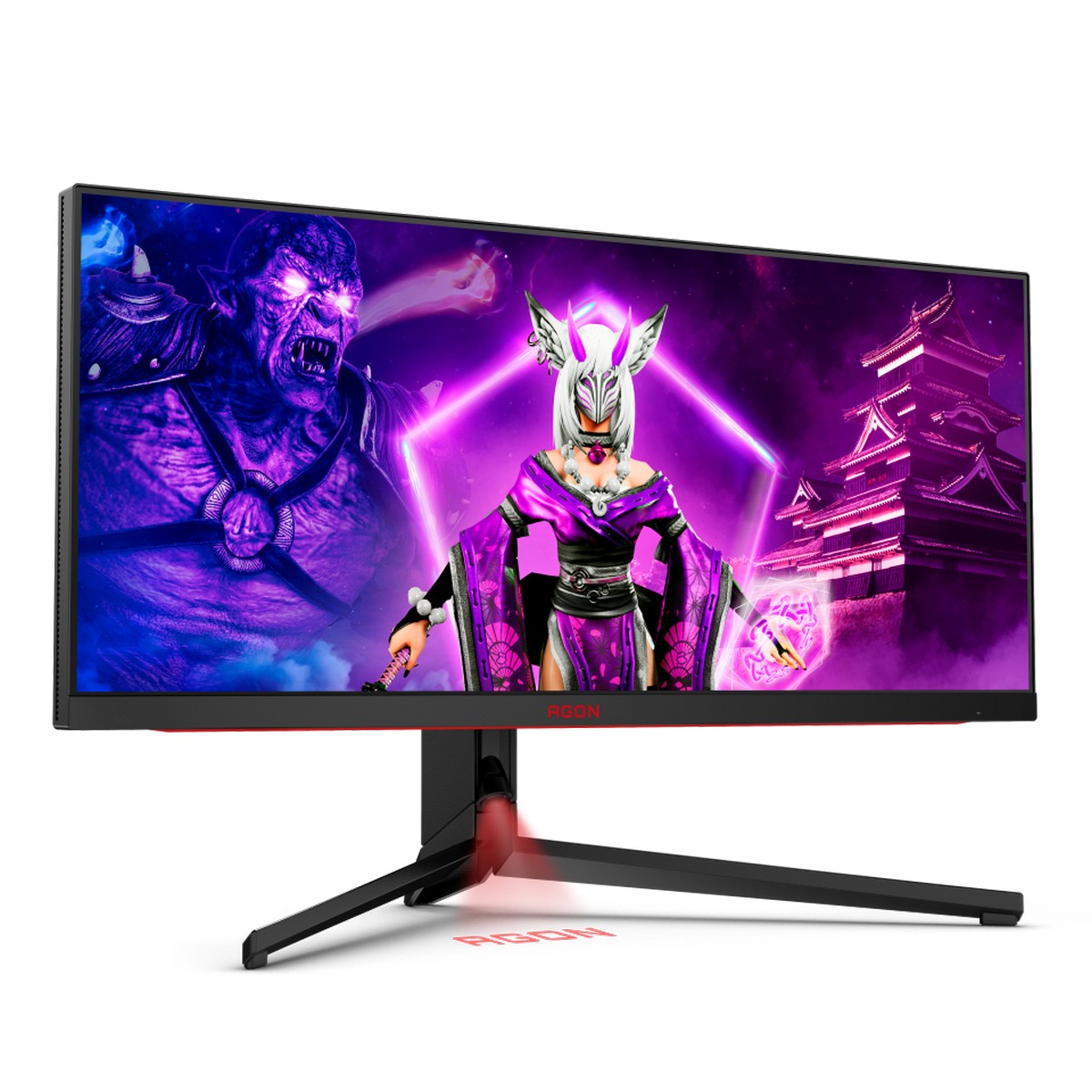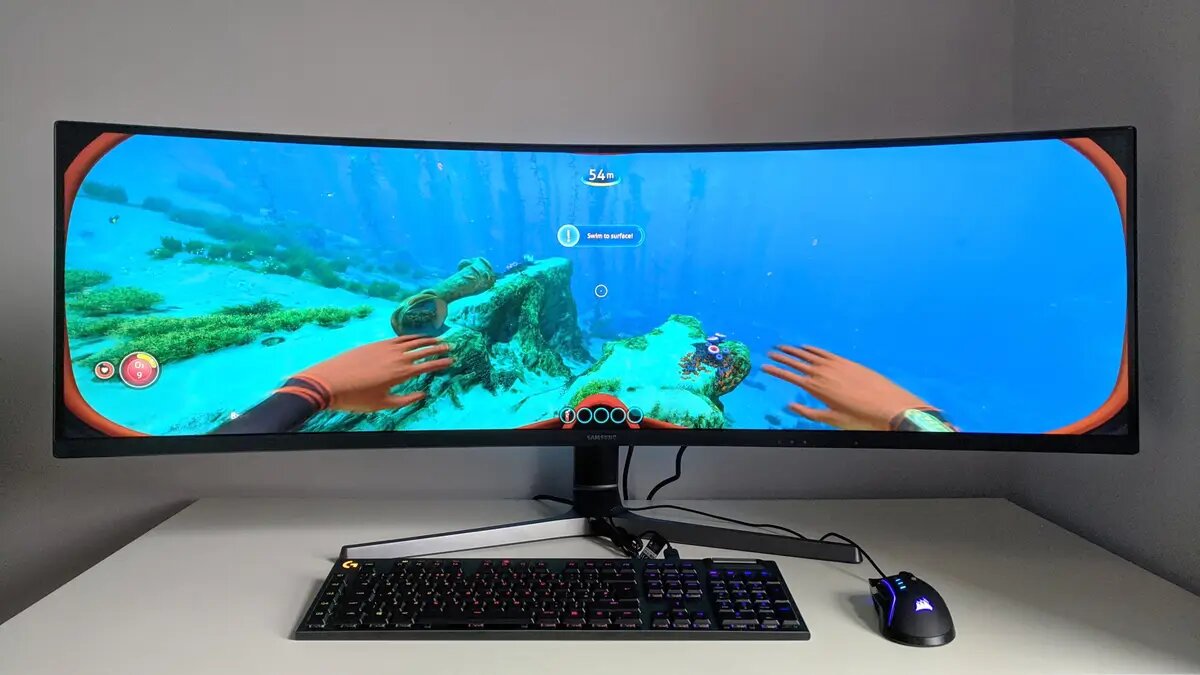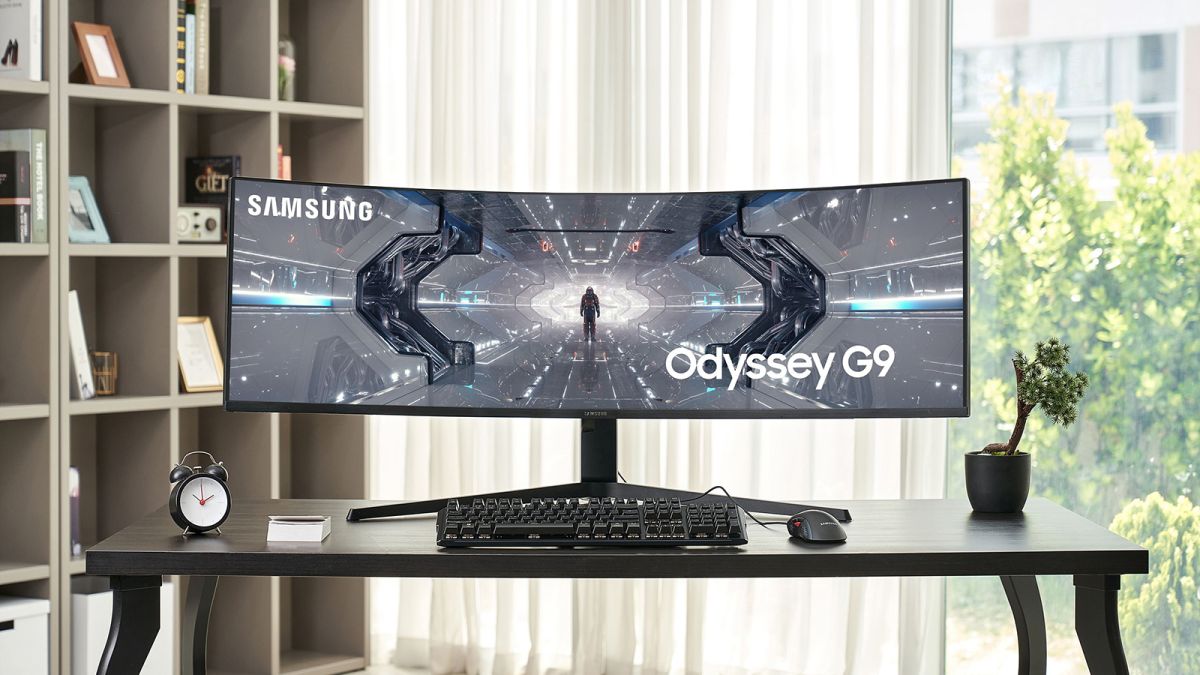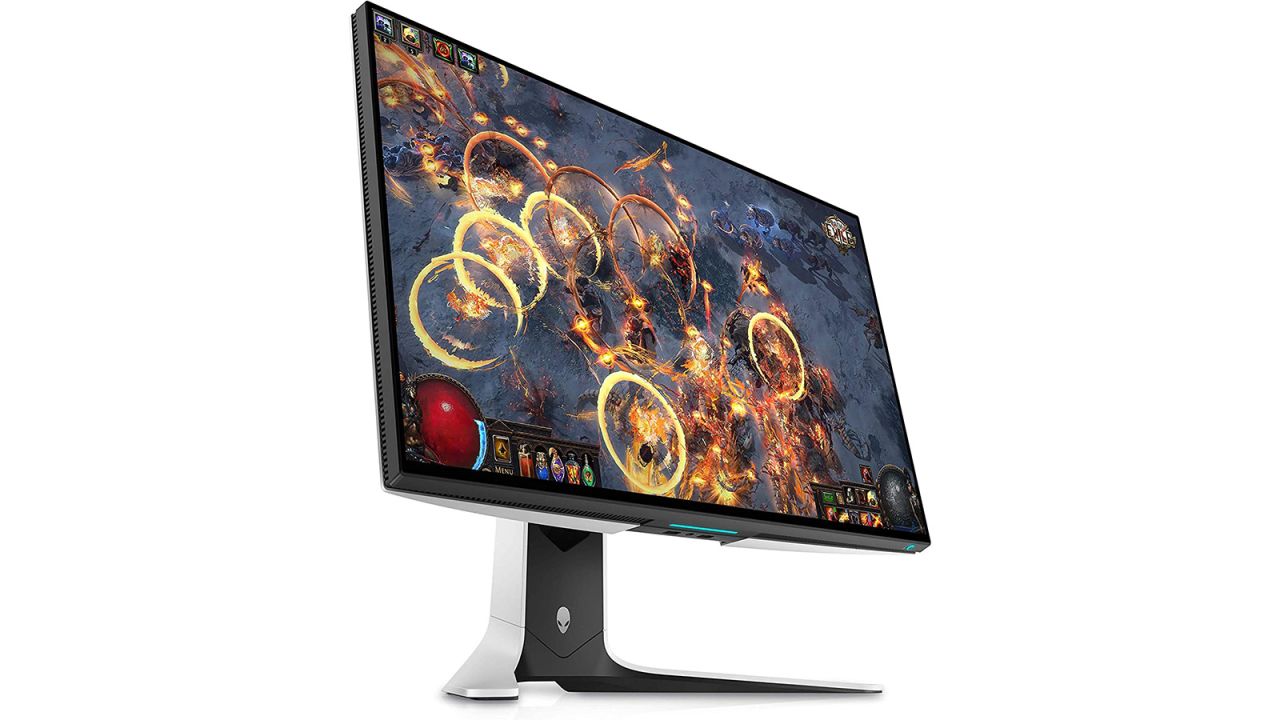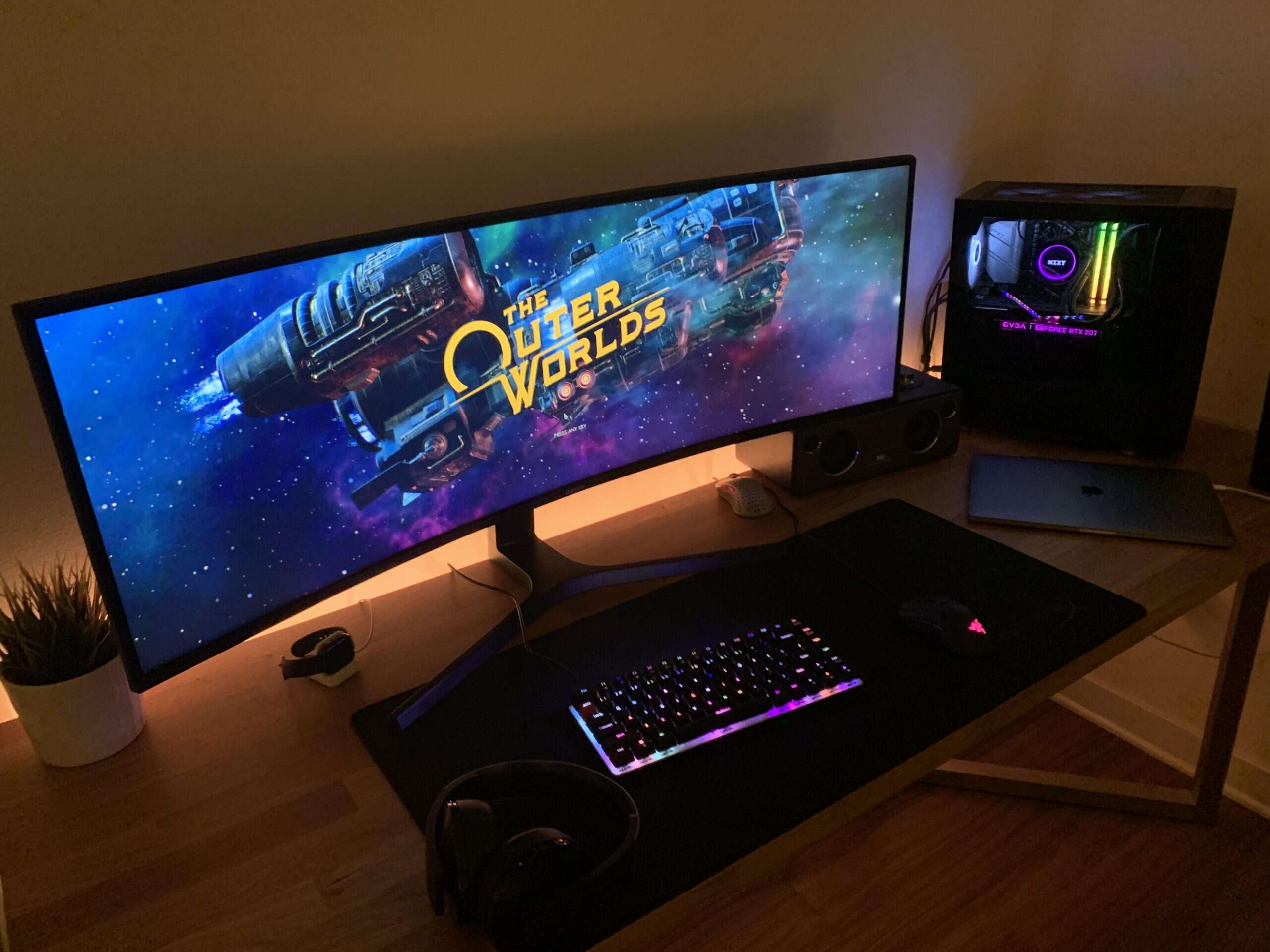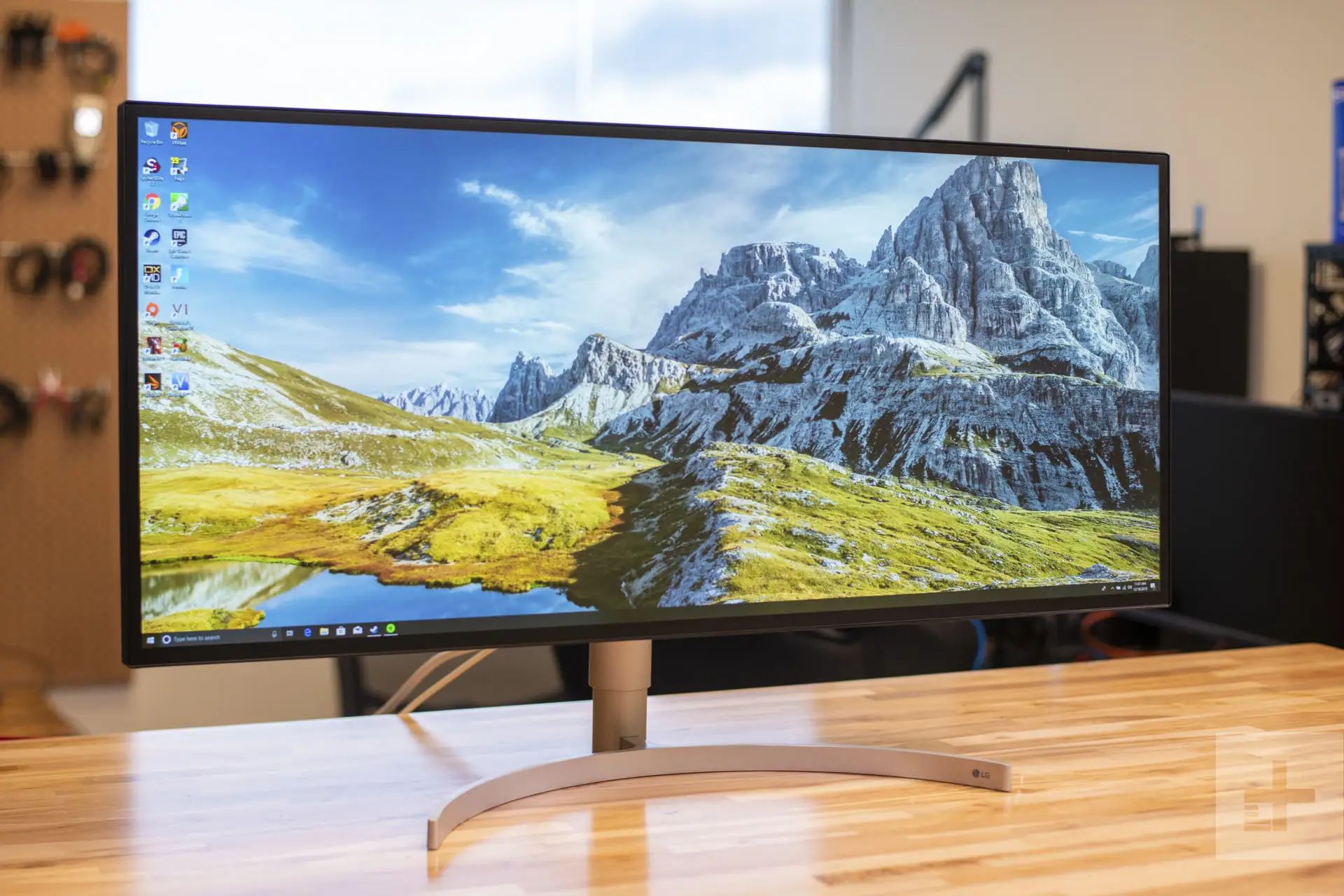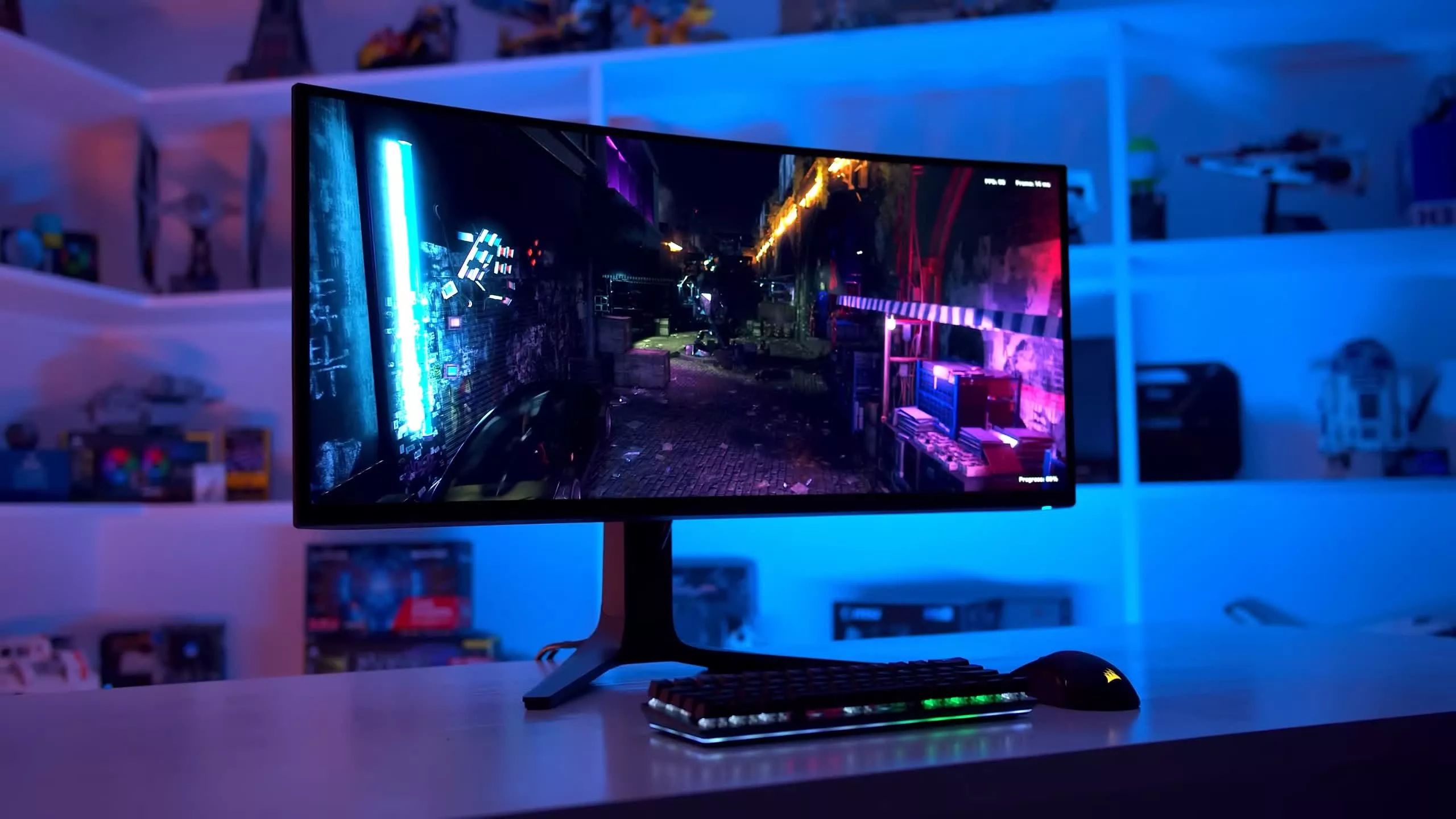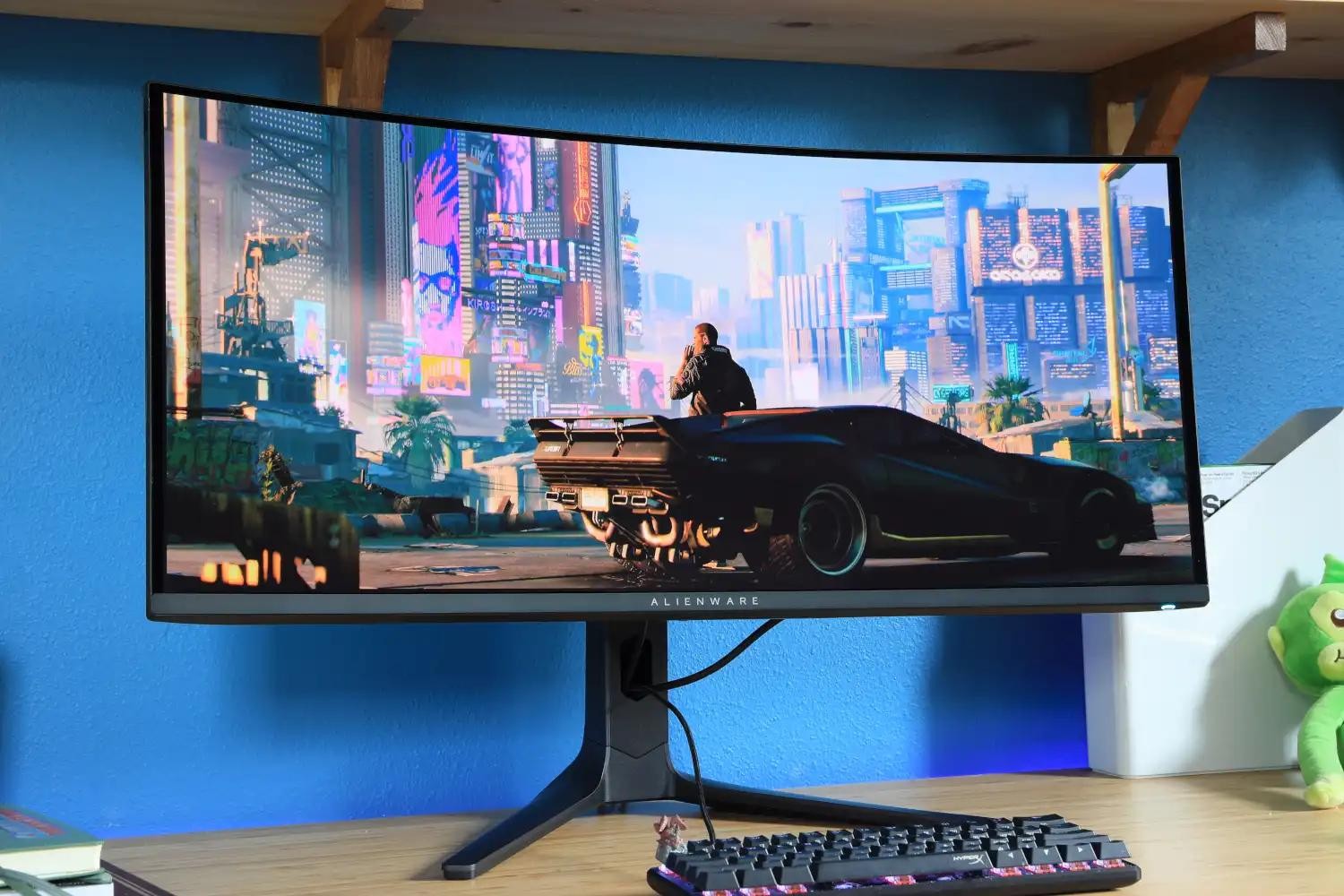Introduction
Welcome to the world of ultrawide monitors! As technology continues to advance, computer monitors are evolving to offer a more immersive and expansive viewing experience. Ultrawide monitors, with their wider aspect ratios, are gaining popularity among professionals, gamers, and multimedia enthusiasts alike. If you’re unfamiliar with ultrawide monitors or looking to upgrade your current setup, this article will provide you with a comprehensive understanding of the average size of a 21:9 ultrawide monitor.
Ultrawide monitors are designed to enhance productivity, gaming experiences, and content consumption. In this article, we’ll delve into the average sizes of 21:9 ultrawide monitors and explore the factors to consider when choosing the right size for your needs. Additionally, we’ll discuss the benefits and drawbacks of using a 21:9 ultrawide monitor. So, whether you’re a professional seeking a wider workspace, a gamer looking for a more immersive gaming experience, or a movie buff craving a cinematic display, read on to discover everything you need to know about the average size of a 21:9 ultrawide monitor.
What are Ultrawide Monitors?
Ultrawide monitors, as the name suggests, are computer monitors that offer an exceptionally wide aspect ratio compared to traditional monitors. These monitors have a wider screen, allowing for a broader field of view and more screen real estate. They provide a more immersive and panoramic viewing experience, making them ideal for various applications, including gaming, multimedia editing, and productivity tasks.
Ultrawide monitors typically have an aspect ratio of 21:9, which means the width of the screen is 21 units, while the height is 9 units. In comparison, standard monitors usually have a 16:9 aspect ratio. The extra width of ultrawide monitors gives users a wider horizontal view, eliminating the need for multiple monitors side by side.
These monitors come in various sizes, ranging from 29 inches to a whopping 49 inches or even larger. They offer a wider field of vision, allowing users to see more content at once, whether it’s multiple windows, spreadsheets, or detailed graphics. This expanded screen space can greatly enhance productivity for professionals who work with multiple applications simultaneously.
Moreover, ultrawide monitors are popular among gamers as they provide a more immersive gaming experience. With the wider aspect ratio, gamers can see more of the gaming environment, giving them a competitive edge and making the gameplay more engaging. The ultrawide format also reduces the need for screen splitting or dual-monitor setups for gaming, providing a seamless and uninterrupted display.
Overall, ultrawide monitors offer a unique and immersive viewing experience with their wider aspect ratio and larger screen space. Whether you’re a professional seeking to boost productivity, a gamer looking to enhance your gaming setup, or a multimedia enthusiast craving a more immersive multimedia experience, ultrawide monitors are worth considering.
Understanding Aspect Ratio
Aspect ratio is a fundamental concept in the world of monitors and displays. It refers to the proportion between the width and height of the screen. It is expressed as a ratio, such as 16:9, where the first number represents the width and the second number represents the height.
The aspect ratio determines the shape and size of the display and has a significant impact on the viewing experience. Traditional monitors commonly have a 16:9 aspect ratio, also known as widescreen, which has become the standard for many devices, including televisions, computer monitors, and laptops.
Ultrawide monitors, on the other hand, have a different aspect ratio. The most popular aspect ratio for ultrawide monitors is 21:9. This means that the width of the screen is 21 units, while the height is 9 units. This wider aspect ratio offers a more cinematic feel and a wider field of view compared to traditional monitors.
It’s worth noting that aspect ratio has a direct impact on how content is displayed on the screen. When watching a movie in its original widescreen format on an ultrawide monitor, you will have a more immersive viewing experience without any black bars on the top and bottom of the screen. However, some content that is optimized for a 16:9 aspect ratio, such as certain games or videos, may have black bars on the sides of the screen when displayed on an ultrawide monitor.
Understanding aspect ratio is crucial when choosing a monitor, as it determines the overall visual experience and compatibility with various types of content. While traditional 16:9 monitors are suitable for most computing tasks, the wider 21:9 aspect ratio of ultrawide monitors offers a unique viewing experience for gaming, multimedia editing, and multitasking.
By understanding aspect ratio, you can make an informed decision when selecting a monitor that best suits your needs and preferences. Whether you opt for a traditional 16:9 monitor or decide to go for the wider and more immersive 21:9 ultrawide monitor, aspect ratio plays a crucial role in shaping your visual experience.
What does 21:9 Aspect Ratio Mean?
The 21:9 aspect ratio refers to the width-to-height proportion of a display. Specifically, it means that for every 21 units of width, there are 9 units of height. This wider aspect ratio is commonly found in ultrawide monitors, offering a more expansive view compared to traditional 16:9 monitors.
The 21:9 aspect ratio provides a wider and more panoramic field of view, which can enhance various activities such as gaming, multitasking, and multimedia editing. It allows users to see more content horizontally, eliminating the need for multiple monitors side by side and providing a seamless viewing experience.
When it comes to content viewing, the 21:9 aspect ratio has its pros and cons. When watching movies shot in wider aspect ratios, such as 2.35:1 or 2.39:1, on a 21:9 ultrawide monitor, the display will fully utilize the available screen space, resulting in a more immersive cinematic experience without any black bars. This is particularly appealing for movie enthusiasts or those working with video editing or production.
However, not all content is designed for the 21:9 aspect ratio. Some games and videos are optimized for the more common 16:9 aspect ratio, which means that when displayed on a 21:9 ultrawide monitor, black bars may appear on the sides of the screen. While this doesn’t diminish the viewing experience, it’s essential to consider the compatibility of content with the aspect ratio of your monitor.
It’s important to note that the 21:9 aspect ratio is not limited to a specific screen size. Ultrawide monitors with a 21:9 aspect ratio come in various sizes, ranging from 29 inches to larger models that exceed 49 inches. The size you choose will depend on your personal preferences, workspace limitations, and intended use.
Ultimately, the 21:9 aspect ratio offers a more immersive and panoramic viewing experience, perfect for gaming, multimedia editing, and multitasking. By providing a wider field of view, ultrawide monitors with a 21:9 aspect ratio allow you to fully immerse yourself in your content, making your computing experience more engaging and enjoyable.
Average Sizes of 21:9 Ultrawide Monitors
21:9 ultrawide monitors come in a range of sizes to cater to different needs and preferences. The size of the monitor refers to the diagonal measurement of the screen, typically measured in inches. When it comes to choosing the right size for your 21:9 ultrawide monitor, several factors come into play, including your intended use, desk space availability, and personal viewing preferences.
The average sizes of 21:9 ultrawide monitors generally start at around 29 inches and go up to 49 inches or larger. Here are a few common sizes you’re likely to come across:
- 29 inches: This size is an excellent entry point for those new to ultrawide monitors. It provides a wider screen space compared to traditional monitors, making it suitable for multitasking and productivity applications.
- 34 inches: The 34-inch size is a popular choice for both gaming and productivity. It strikes a balance between screen real estate and desk space requirements, offering an immersive viewing experience without overwhelming your workspace.
- 38 inches: The 38-inch size offers a larger display area, perfect for professionals who require a wider workspace. It’s well-suited for those who multitask extensively or work with applications that benefit from the extra screen space.
- 49 inches: This size is at the top end of the spectrum, providing an incredibly wide and immersive viewing experience. It’s an excellent choice for gamers, content creators, or professionals who want to maximize their productivity with a vast canvas.
It is important to consider your work or entertainment needs, as well as your desk space, when choosing the size of a 21:9 ultrawide monitor. While a larger screen can offer a more immersive experience, it may not be suitable if you have limited space. On the other hand, a smaller monitor might not provide the desired level of productivity or gaming enjoyment if you require a wider display area.
Ultimately, the size of your 21:9 ultrawide monitor should align with your specific requirements and preferences. It’s recommended to consider factors such as your workflow, available desk space, and budget to make an informed decision when selecting the ideal size for your ultrawide monitor.
Factors to Consider
When choosing a 21:9 ultrawide monitor, there are several factors to consider to ensure you select the right one that meets your needs and preferences. These factors will help you make an informed decision and ensure that your ultrawide monitor enhances your computing experience.
1. Intended Use: Consider what you primarily use your monitor for. If you’re a gamer, you may prioritize a higher refresh rate and features like Adaptive Sync. For productivity tasks, a larger screen size and higher resolution may be more important.
2. Screen Size: Determine the ideal screen size for your workspace. Take into account the available desk space, viewing distance, and how much screen real estate you require for your applications or games.
3. Resolution: The resolution of the monitor determines the level of detail and sharpness. Higher resolutions, such as Ultra HD (4K) or Quad HD (1440p), offer a crisper image quality, but also require more powerful hardware to drive them.
4. Connectivity: Evaluate the connectivity options available on the monitor. Ensure that it has the necessary ports to connect to your computer or other devices, such as HDMI, DisplayPort, or USB-C.
5. Refresh Rate and Response Time: Gamers should pay attention to the refresh rate and response time of the monitor. Higher refresh rates, such as 144Hz or 240Hz, provide smoother motion in games, while lower response times reduce motion blur.
6. Panel Technology: Different panel technologies, such as IPS, VA, or TN, offer varying color reproduction, viewing angles, and response times. Consider your requirements in terms of color accuracy and viewing angles when selecting a panel type.
7. Ergonomics: Look for adjustable stands that allow you to customize the height, tilt, and rotation of the monitor. This ensures a comfortable viewing experience and reduces strain on the neck and eyes during extended use.
8. Budget: Set a budget that aligns with your requirements and stick to it. Consider the features that are important to you and find a balance between performance and affordability.
By considering these factors, you can narrow down your options and choose a 21:9 ultrawide monitor that caters to your specific needs. Remember to prioritize the features that are most important to you and find a monitor that strikes a balance between the desired specifications and your budget.
Benefits of Using a 21:9 Ultrawide Monitor
Using a 21:9 ultrawide monitor offers several benefits that can greatly enhance your computing experience. Whether you’re a professional, a gamer, or a multimedia enthusiast, here are some advantages of using a 21:9 ultrawide monitor:
1. Immersive Viewing Experience: The wider aspect ratio of a 21:9 ultrawide monitor provides a more immersive and panoramic viewing experience. Whether you’re gaming, watching movies, or editing videos, the extended horizontal screen space enhances your visual engagement.
2. Increased Productivity: The wide screen space allows for efficient multitasking. You can have multiple windows open side by side, making it easier to compare documents, reference materials, or work on multiple projects simultaneously. This improved productivity can be particularly beneficial for professionals who rely on efficient workflow management.
3. Gaming Advantages: One of the most significant advantages for gamers is the wider field of view. With more screen real estate, you can see more of the gaming environment, gaining a competitive edge in multiplayer games and immersing yourself fully in the gaming experience.
4. Enhanced Multimedia Editing: If you’re involved in multimedia editing, such as video production or graphic design, a 21:9 ultrawide monitor provides a wider canvas to work with. Whether you’re editing timelines, manipulating layers, or adjusting color grading, the additional screen space allows for more precise control and a more efficient workflow.
5. Seamless Split Screen: With an ultrawide monitor, you can create virtual split screens without the need for multiple physical monitors. This is ideal for executing tasks that require simultaneous access to multiple applications or documents, such as research, coding, or content creation.
6. Cinematic Experience: Watching movies on a 21:9 ultrawide monitor eliminates the black bars that appear on traditional monitors. You can enjoy films in their original wider aspect ratios, providing a more immersive and cinematic experience that replicates the feeling of being in a theater.
7. Space Saving: Ultrawide monitors offer a space-saving solution compared to using multiple monitors side by side. With a single monitor, you can achieve a wider screen space without cluttering your workspace with extra monitors and cables.
8. Future-Proof Investment: With the growing popularity of ultrawide monitors and the increasing support for the 21:9 aspect ratio from developers and content creators, investing in a 21:9 ultrawide monitor ensures you are well-prepared for future trends and advancements in visual media.
In summary, using a 21:9 ultrawide monitor provides an immersive viewing experience, enhances productivity, offers advantages for gaming and multimedia editing, allows for seamless split-screen multitasking, creates a cinematic experience, saves space, and ensures a future-proof investment. Considering these benefits, an ultrawide monitor can significantly enhance your overall computing experience, whether you’re working, gaming, or enjoying multimedia content.
Drawbacks of Using a 21:9 Ultrawide Monitor
While there are many advantages to using a 21:9 ultrawide monitor, it’s important to consider the potential drawbacks as well. Understanding the limitations can help you make an informed decision and decide if a 21:9 ultrawide monitor is the right choice for your specific needs. Here are some potential drawbacks to keep in mind:
1. Content Compatibility: Not all content is optimized for the 21:9 aspect ratio. Some games, videos, and software may have limited support or may display with black bars on the sides, reducing the immersive viewing experience. It’s important to ensure that your favorite applications and media are compatible with an ultrawide monitor before making a purchase.
2. Price Premium: Compared to traditional 16:9 monitors, ultrawide monitors tend to come with a higher price tag. The wider aspect ratio and larger screen size often result in increased manufacturing costs. If budget is a concern, it’s worth considering if the advantages of an ultrawide monitor outweigh the additional cost.
3. Desk Space Requirements: Ultrawide monitors, particularly those with larger screen sizes, require more desk space. The wider display may not fit on every desk or workstation, and it’s important to ensure you have enough room to comfortably accommodate the monitor.
4. Increased Hardware Demands: To fully utilize the potential of a 21:9 ultrawide monitor, you may need more powerful hardware, especially for gaming or demanding multimedia tasks. The higher resolution and wider aspect ratio can put a strain on your graphics card and system resources, potentially requiring an upgrade to ensure smooth performance.
5. Limited Peripheral Compatibility: Some peripherals, such as older graphics cards or specialized display equipment, may not support the wider aspect ratio of an ultrawide monitor. It’s important to check compatibility with your existing setup or consider potential peripheral upgrades before investing in a 21:9 monitor.
6. Viewing Angle Considerations: Depending on the specific panel technology used in the ultrawide monitor, you may experience limited viewing angles or color shifting when viewing the screen from extreme angles. This could impact the visual experience if you frequently collaborate with others or require consistent color accuracy from various angles.
7. Potential Software Limitations: Certain software applications, including productivity tools or video editing software, may not make optimal use of the wider aspect ratio. Interfaces and menus may not scale well, resulting in less efficient utilization of screen space.
While the drawbacks of using a 21:9 ultrawide monitor are worth considering, they do not diminish the benefits and advantages it can offer. By assessing these limitations against your specific needs and preferences, you can make an informed decision and determine if a 21:9 ultrawide monitor is the right choice for you.
Conclusion
With their wider aspect ratios and larger screen real estate, 21:9 ultrawide monitors offer a unique and immersive viewing experience. They are well-suited for professionals seeking increased productivity, gamers aiming for a more immersive gaming experience, and multimedia enthusiasts craving a cinematic display. By understanding the average sizes, aspect ratios, benefits, and drawbacks of 21:9 ultrawide monitors, you can make an informed decision about whether to invest in one.
Ultrawide monitors come in various sizes, ranging from 29 inches to 49 inches or larger, providing options to suit different needs and desk spaces. The wider aspect ratio of 21:9 enables a more immersive and panoramic viewing experience, enhancing productivity, gaming, and multimedia editing.
While the benefits of 21:9 ultrawide monitors are significant, it’s essential to consider potential drawbacks, such as content compatibility, higher price tags, desk space requirements, increased hardware demands, limited peripheral compatibility, viewing angle considerations, and potential software limitations.
In the end, the decision to invest in a 21:9 ultrawide monitor should be based on your specific requirements, preferences, and budget. Consider your primary use, desired screen size, resolution, connectivity options, and panel technology to find the right balance between performance and affordability.
Whether you’re a professional who needs a wider workspace, a gamer looking for a more immersive gaming experience, or a multimedia enthusiast craving a cinematic display, a 21:9 ultrawide monitor can elevate your computing experience. Carefully assess your needs, consider the factors outlined in this article, and make an informed decision to enjoy the benefits of a 21:9 ultrawide monitor that aligns with your preferences and goals.







